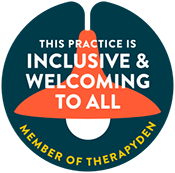Parenting a child with ADHD is a marathon, but with science-backed strategies, you can help them thrive. As a child psychologist, I draw on research to offer practical tools for
navigating ADHD, a neurodevelopmental disorder affecting 5–10% of kids, marked by challenges in attention, impulse control, and hyperactivity.
What Does an Autism Evaluation Look Like?
What Does an Autism Evaluation Look Like?
April 3, 2025 | Eleonora Sadikova, Ph.D. | 6 min. read
In a previous post, we discussed what autism is, as well as what it isn’t, in this post, we explain what a typical autism evaluation may look like, as well as some of the reasons why an individual may seek one for themselves or for their child.

What does an autism evaluation look like?
If you are considering an autism evaluation for yourself or your child, you may be wondering what the process entails. While the specifics may vary depending on the clinician or setting, most autism evaluations follow a comprehensive and structured approach to gather a full picture of an individual’s development, communication style, sensory preferences, and daily life experiences.
Initial Consultation and Developmental History
The evaluation process typically begins with an initial consultation, often in the form of an interview or intake session. For children, parents or caregivers are usually asked detailed questions about early development, behavior patterns, strengths, and areas where support may be needed. Adults undergoing evaluation may reflect on their own experiences, challenges, and sensory preferences.
This step is crucial for understanding an individual’s background and history, including early communication milestones, sensory sensitivities, social experiences, and daily routines. Family history may also be considered, as autism tends to run in families.
Comprehensive Assessment and Observations
Assessments are designed to be engaging and comfortable, especially for children. Clinicians often use naturalistic observations and interactive activities to ensure the evaluation feels supportive rather than stressful. Autism evaluations usually involve a combination of standardized assessments, behavioral observations, and self-reports or caregiver reports. Some of the most common components include:
- Parent and Teacher Questionnaires: These provide insight into how an individual functions in different settings, such as at home, school, or work.
- Play-Based or Structured Social Assessments: For young children, evaluators may use interactive play-based tasks to observe social communication and engagement.
- Cognitive and Adaptive Functioning Assessments: These help to understand how an individual processes information, solves problems, and navigates daily life tasks.
- Sensory Profile: Many autistic individuals experience sensory sensitivities, such as heightened sensitivity to sounds, lights, or textures. Evaluating sensory preferences and challenges can help in understanding comfort levels in different environments.
Feedback and Understanding the Results
After completing the evaluation, the clinician provides a detailed report that includes findings, insights, and recommendations. This report highlights both strengths and areas where support might be beneficial. A neurodiversity-affirming approach ensures that the focus is not solely on challenges but also on the individual’s unique abilities and potential.
The feedback session is an opportunity to ask questions, gain clarity, and discuss next steps. Recommendations may include school accommodations, therapy options, workplace adjustments, or community support resources. The goal of the evaluation is to provide meaningful insights that help individuals and families better understand their needs and find strategies that promote success and well-being.
Why Seek an Autism Evaluation?
An autism evaluation can be a powerful tool for self-understanding and advocacy. Some people seek an evaluation because they have long-standing questions about themselves or their child. Others pursue testing to gain access to accommodations, educational support, or workplace adjustments.
Early identification can help children receive the right support at critical developmental stages, while a late diagnosis can provide adults with a new framework for understanding their past experiences. Regardless of age, an autism evaluation is not about labeling—it’s about understanding how a person’s brain works and finding ways to support them in a world that may not always be designed with neurodivergence in mind.
Understanding autism through a strengths-based and neurodiversity-affirming lens allows for greater acceptance and support. Whether you are seeking answers for yourself, your child, or a loved one, an autism evaluation can be a meaningful step toward self-awareness, empowerment, and access to resources that enhance quality of life.
Follow us for more wellness content!
More Blog Posts
Raising Kids with ADHD: A Practical Guide

Raising Resilient Kids in a Fragile World
Parenting today is challenging, with cultural shifts often undermining kids’ resilience. As a child psychologist inspired by The Coddling of the American Mind by Haidt and Lukianoff, I offer evidence-based strategies to foster your child’s ability to navigate life’s challenges.

What Does an Autism Evaluation Look Like?
While the specifics may vary depending on the clinician or setting, most autism evaluations follow a comprehensive and structured approach to gather a full picture of an individual’s development, communication style, sensory preferences, and daily life experiences.

What is Autism?
Autism is a naturally occurring variation in how brains process information, communicate, and experience the world. It is not a disorder to be “fixed” but rather a neurotype—one of many ways human minds work.
In crisis or need immediate help?
Call 988 or go to your nearest ER.
Services
Adolescent Psychotherapy
Adult Psychotherapy
Assessments & Evaluation
Child Psychotherapy
Cognitive Behavioral Therapy
Couples Therapy
Family Therapy & Parent Coaching
Genetic Testing
Group Therapy
Medication Management
Play Therapy
Single-Session Therapy
Teletherapy
Orchard Mental Health Group
Accepted Insurance*
Aetna
Carefirst / Blue Cross Blue Shield
Cigna
Humana / Tricare
Johns Hopkins Health Plans
Medicaid
Medicare
Optum / UnitedHealthcare
*Varies by service
Partner Resources
Contact Us
M-F, 9am-5pm Eastern Time
Phone: 240-750-6467
Fax: 240-912-7835
contact@orchardmentalhealth.com
9707 Key West Avenue, Suite #100 Rockville, MD 20850










